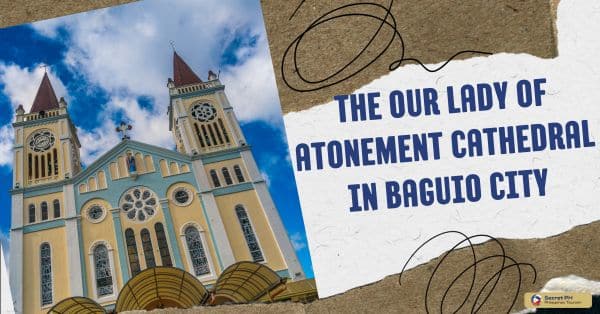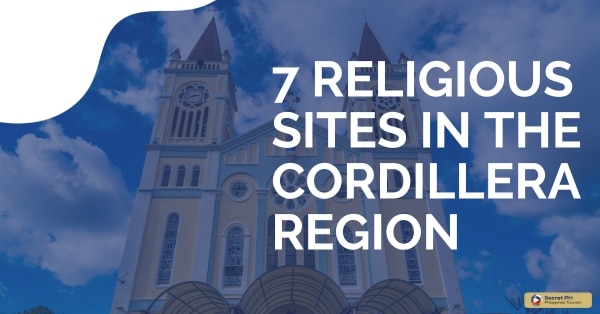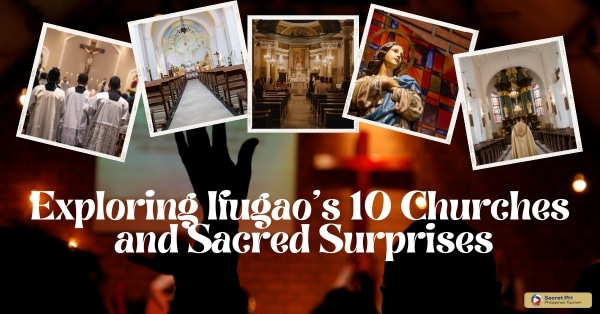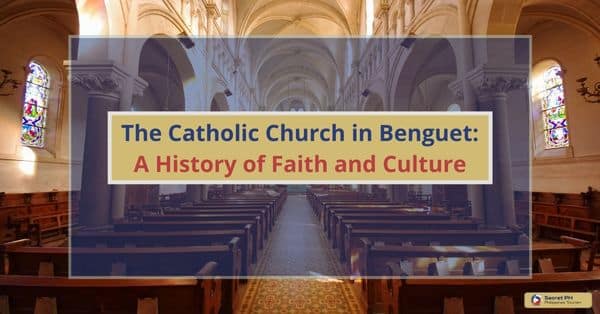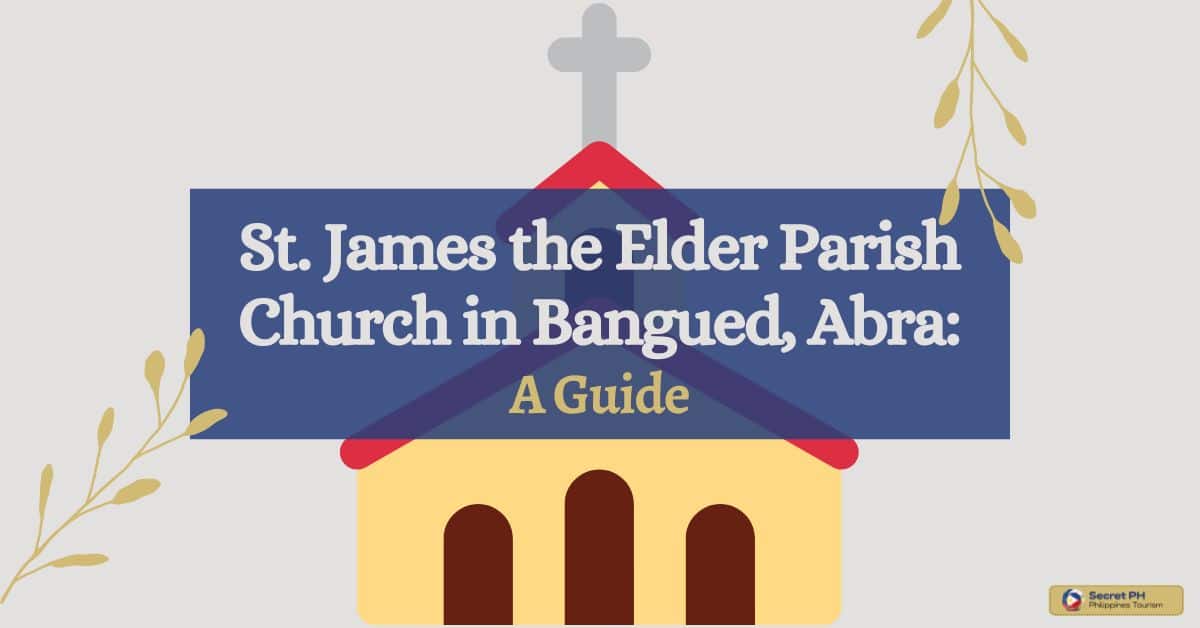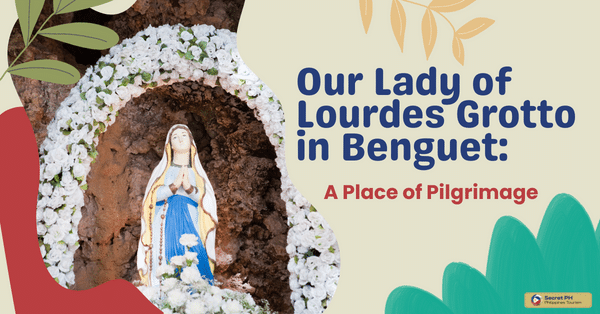The Santo Niño de Cebu is a revered religious icon in Cebu City, Philippines, believed to have been gifted by Ferdinand Magellan in 1521. The devotion to the Santo Niño is celebrated annually with the Sinulog Festival and the Santo Niño de Cebu Basilica and Shrine houses the original statue. The basilica is a popular pilgrimage site and features a treasure room with artifacts and relics showcasing the rich history and cultural significance of the Santo Niño de Cebu.
In this blog, we will explore the history, celebrations, and devotions surrounding the Santo Niño de Cebu, as well as the importance of the Santo Niño de Cebu Basilica and Shrine. Join us as we delve into the rich cultural heritage of this beloved religious icon.

The Santo Niño de Cebu to the Cebuano People
The Santo Niño de Cebu holds immense cultural and spiritual significance for the Cebuano people. As a symbol of their Catholic faith, the Santo Niño is revered as a source of divine grace and protection. The devotion to the Santo Niño is deeply ingrained in Cebuano culture, passed down from generation to generation, and is celebrated with various festivals and religious events throughout the year.
One of the most notable celebrations honoring the Santo Niño is the Sinulog Festival, a colorful and vibrant procession that takes place annually in Cebu City. This event attracts thousands of devotees and tourists alike, who come to pay their respects to the Santo Niño and celebrate the rich cultural heritage of Cebu.
In addition to the Sinulog Festival, the Santo Niño de Cebu Basilica and Shrine is a place of pilgrimage for many Cebuano Catholics. The basilica houses the original statue of the Santo Niño, which is believed to have been gifted by Ferdinand Magellan in 1521, and is a testament to the deep-rooted religious devotion of the Cebuano people.

Celebrations and Festivals Honoring the Santo Niño de Cebu
Celebrations and festivals honoring the Santo Niño de Cebu are some of the most vibrant and joyous religious activities in the Philippines. Every January, millions of people from around the world come to Cebu to honor their faith and join in the festivities.
Live music performances, colorful parades, historic reenactments, painting competitions, raffles, food festivals, photo exhibitions – all of these contribute to an all-encompassing atmosphere of devotion. The feast honors not only beliefs but also ancestry and culture; participants dress in traditional garments while they participate in beautiful spiritual processions throughout the city streets.
Sinulog Festival
Every year, devotees from all over the world travel to Cebu City in the Philippines to celebrate and honor the Santo Niño de Cebu. This unique religious event brings together many Filipino cultures and traditions held throughout Sinulog Festival.
Sinulog is celebrated every third Sunday of January in honor of the Señor Santo Niño or Holy Child Jesus, the symbol of Christianity that began with Spanish missionaries arriving in Cebu. During Sinulog celebration, a grand procession is held of street dance performances from different towns and cities across the country displaying exquisite traditional costumes while music plays with lyrics praising and honoring the Santo Niño.
Sinulog also features concerts, parades, trade fairs, pageants, and religious activities such as mass prayers open to all devotees. This festival which has been observed by locals for centuries is recognized around the world as one of the most colorful culture and tradition-filled celebrations honoring the Santo Niño de Cebu.

Dinagyang in Iloilo
Every year, Dinagyang in Iloilo and other festivals throughout the region honor Santo Niño de Cebu. Dinagyang is a colorful celebration of faith, featuring street processions revelers walking with devotees dressed in traditional costumes and vibrant masks.
Dinagyang culminates with a celebration of Mass, dancing and fireworks to honor their patron Saint. Celebrations and Festivals Honoring the Santo Niño de Cebu provide locals with the opportunity to express their love for their patron saint.

Ati-Atihan, Kalibo
Celebrations and festivals honoring the Santo Niño de Cebu are a cultural highlight for the people of the Philippines. At the start of every January, Ati-Atihan festival is celebrated in Kalibo, Aklan on the island of Panay. It is described as a “Feast that honors the Santo Niño”.
At this festival, everyone dresses up wearing colorful costumes. There are dances with rhythmic music in honor of Sto. Niño de Aklan, Ati Atihan’s patron saint. Participants join processions holding colorful images of Sto. Niño. This tradition has remained a popular celebration where one can witness Filipino culture at its best.

Processions and Parades
Processions and parades, along with other activities and events, such as folk dances, song renditions and offerings of flowers. This mark what has become a traditional Filipino Catholic event held annually on the third Sunday in January. People of all ages come together to honor the Child Jesus, who is known as a major symbol of hope in the province of Cebu.
Many also take part in celebrating through street fairs featuring different items sold by vendors of local goods. Often times these fairs include various traditional dishes that are prepared during this special religious occasion. Regardless of the different forms of celebration, one thing remains the same. It serves as an opportunity for Filipino Catholics to express faith and love for their devotion to God’s beloved Child Jesus.

The Santo Niño de Cebu Basilica and Shrine
The Santo Niño de Cebu Basilica and Shrine, located in the city of Cebu in the Philippines. It has been an iconic location of faith and history. This church dates back to 1565 and prioritizes the veneration of the Infant Jesus or Santo Niño.
Within its ancient walls lies a venerated statue that is believed to have granted countless miracles throughout time. This makes a vibrant cultural center a central focal point for pilgrims across its region of origin. The festivities held inside its doors celebrate not only religious belief but also Philippine culture. Further solidifying this place of spirituality as one of the country’s most historically valuable churches.
Address: Pilgrim’s Center, Osmeña Blvd, Cebu City, 6000 Cebu
Opening Hours: Monday – Sunday, 6AM – 7PM
Phone: (032) 255 6697
To check pictures and more information, click here.

Location and Design
In Cebu City, Philippines, is the Santo Niño de Cebu Basilica and Shrine. One of the most famous Roman Catholic churches in the country. It was built in 1565 to honor a miraculous image of the infant Jesus. It was believed to be given to Queen Juana by Miguel Lopez de Legaspi, who conquered Cebu in the same year. A perfect combination of Filipino and Spanish cultures.
The building itself is a stunning sight: massive buttresses line its façade and two floors are connected by grand staircases. Inside its doors lie breathtaking Spanish designs with glazed tiles and frescoes adorned with gold leafing depicting different biblical scenes on its walls.

Significance of the Basilica and Shrine
The Santo Niño de Cebu Basilica and Shrine is one of the most important religious sites in the Philippines. It is deeply rooted in Catholicism with centuries of deep-seated faith and devotion. Located in Cebu, it is the oldest Roman Catholic basilica founded by Ferdinand Magellan after his arrival in the country in April 1521.
The shrine holds a relic of the Santo Nino or Holy Child Jesus. It is a holy image that was given as a baptismal gift to Queen Juana, wife of Rajah Humabon who embraced Christianity. This is known as the first Christian Baptism of the Philippines making it even more meaningful to many Filipinos today.

The Treasure Room and its Artifacts
The Treasure Room contains an array of religious relics. This includes ornate vestments, chalices, monstrance, and rosaries. There are also intricate sculptures and paintings. Other religious artifacts, such as the original cedar box that held the Santo Niño de Cebu when it was first brought to the Philippines.
One of the most notable artifacts in the Treasure Room is a collection of miniature Santo Niño de Cebu statues. Each intricately carved and dressed in its own unique attire. These tiny statues are symbols of the love and devotion that the Cebuano people have for the Holy Child. They are often given as gifts to commemorate special occasions and milestones.

The Devotion to the Santo Niño de Cebu
The devotion is deeply rooted in celebrations throughout the years. The Sinulog which involves dancing, pageantry, and feasts in honor of the Santo Niño de Cebu. This devotion has pervaded every level of society. From local residents to high ranking officials who stop in to pay homage. Monuments have been set up across many communities throughout the Philippines to venerate this religious relic.
The Cult of the Santo Niño
This Cult is based on The Statutes and Ornaments that Ferdinand Magellan gifted The Queen. This includes The Santo Niño image itself, votive lights, garlands and small children’s garments made of velvet that adorn The statute. These devotions have intertwined with Filipino customs and beliefs throughout history.

The Role of the Santo Niño de Cebu in Cebuano Religious Life
The Santo Niño de Cebu, also known as The Sto. Niño of Cebu, has developed a strong following within The Philippines and further abroad. The people’s devotion to the Child Jesus is evident in the many celebrations and rituals that take place.
The annual feast day is marked by celebratory processions and dancing. The local shrines are decorated with offerings to pay homage to The Santo Niño de Cebu. The figure is said to bring protection and luck to those who venerate it. With devotees claiming to have had direct experience of its healing love in various life moments.

The Significance of the Santo Niño de Cebu in Contemporary Philippine Culture
The Santo Niño is considered a powerful symbol of faith, hope, and devotion. It is the center of many religious celebrations and traditions. The annual Sinulog Festival, held in Cebu City, is one of the largest and most colorful events in the country. The devotees come together to honor the Santo Niño and pay homage to the Child Jesus. The festival features street dancing, religious processions, and a variety of cultural activities.
Aside from its religious significance, the Santo Niño de Cebu also has cultural, historical, and political importance. It represents the arrival of Christianity in the Philippines and serves as a reminder of the country’s colonial past. It is also considered a symbol of resistance against foreign domination and a source of national pride.

In Conclusion
Located in the oldest city of the Philippines, it stands as a reminder to all centuries of devotion and faith. The basilica and its attached museum are both open to the public daily. There are so many unique experiences to be had within the facility with something for everyone!
Whether you’re looking for a spiritual learning experience or simply want to soak up some history. Visiting the Santo Niño de Cebu Basilica and Shrine is sure to be an enriching experience worth having.

